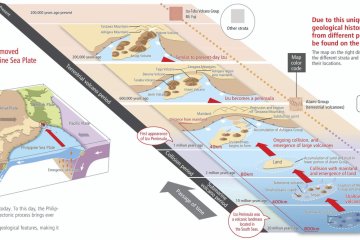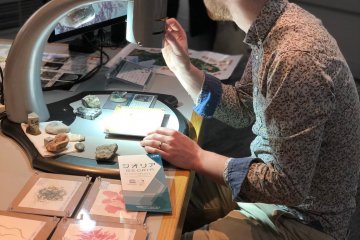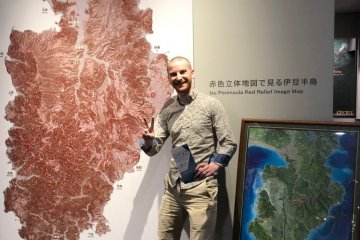Are you even slightly curious about how Japan was born from the depths of the Earth, how Mt Fuji was created, or why the Izu Peninsula should be your next destination? If so, then the Georia Izu Geopark Museum in Shizuoka Prefecture is perfect for you!
I first visited this museum over a year ago, and have been back multiple times since to fully absorb all the information this museum has on display. Am I a bit of a geo-geek? Perhaps, but let me walk you through my experience, and hopefully you'll discover why this museum should be on your go-to list for your next visit to the Izu Peninsula.
As you enter this free museum, yes free, you are greeted by welcoming staff who explain what there is to see. They'll ask you what your primary language is and lead you through to a small seated area where they start a 10min movie narrated in your language of choice. The movie is about the geological history & formation of the Izu Peninsula and Japan. Did you know that Japan sits at the epicenter of four continental plates, with the Izu Peninsula originating thousands of kilometers south as submarine volcanoes on the Philippine Plate? I didn't either, until I visited Georia. OK, I'll stop with the over-the-top advertisement. You get my point.

When it comes to the curation of this small museum (about the size of a basketball court), I can't speak highly enough. Each panel of infographic is in Japanese and English with so much content that you can spend hours working your way through it all. If pictures are more your thing, you're in for a treat too, as the superb graphics can tell the story by themselves. The panels are in a geologically chronological order, making it easy to follow. You're then treated to a section of panels about local flora and fauna. Throughout, the panels reference local places within Izu where you can visit and see first hand geological wonders like columnar joints, volcanic cooling bombs, and remnant lava flows.

In addition to infographic panels, there are interactive and hands-on displays, including microscopes to look closer at the minerals in rocks and plants, a 3D projected relief map showing the geological evolution of the Izu Peninsula and of its various features, and a water-trap display where you can release water over sand to see how rivers erode the landscape into what we see today. There are also featured events and talks for those interested.

So, overall, I loved every minute of it, and I hope you do too. Although the interactive displays are currently limited because of coronavirus precautions, the museum is still open with its social distancing measures (honestly you'll likely be the only one there, so take your time and enjoy it). For those who can't travel but still would love to experience this museum, try their online virtual tour.

Enjoy your trip to Georia and don't forget to pick up the book Geohistory of the Izu Peninsula by Masato Koyama on your way out. You'll be sure to find incredible spots all over the Izu Peninsula for future trips, and the newfound geo-knowledge will enable you to see an extra level of awe and beauty in each place you visit!











